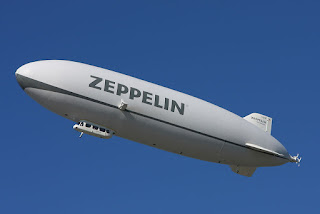Henri Giffard
- Henri Giffard invents the first navigable full-sized airship.
More than fifty years before the wright brothers flew almost an entire minute in the world's first airplane, French engineer Henri Giffard (1825 -1882) traveled 17 miles (27 kilometers) from Paris to Trappes in a lighter - than - air aircraft.
Inspired by the streamlined model airship unveiled by his compatriot Pierre Jullien in 1850, Giffard built his 143 feet (44 meters) long, cigar-shaped dirigible and got it off the ground two years later. with its three-bladed propeller driven by a 3-horsepower (2.2 Kilowatt) steam engine, it was the first passenger-carrying, powered, and steerable airship in history.
Zeppelin NT by Zeppelin Luftschifftechnik
The worlds' most famous airship, the twentieth-century zeppelin, was rigid with a shape Determined by a skeletal structure. Giffard's design was non-rigid. Like a balloon, the envelope's shape depended on the pressure of the hydrogen inside that lifted the airship.
The dirigible's maiden flight took place on September 24, 1852, when Giffard - sitting in a gondola hanging from a net surrounding the ballon - used a rudimentary, sail-like rudder to steer the airship in the intended direction. He accelerated to a speed of 6 miles (10 km) per hour. But unfortunately, the wind was too strong to allow for an immediate return journey, as the combined weight of the engine and boiler (350 pounds/158 kg) only permitted travel in calm weather conditions.
In 1884, Giffard's fellow Frenchmen, Charles Renard and Arthur Krebs made the first full round-trip flight in their airship La France.
Airship travel reached its peak in the first half of the twentieth century until the disastrous last flight of the Hindenburg on May 3, 1937, shattered public confidence in airship travel.
- This dirigible was used in the first successful application of mechanical power to flight on September 24,1852.





No comments:
Post a Comment